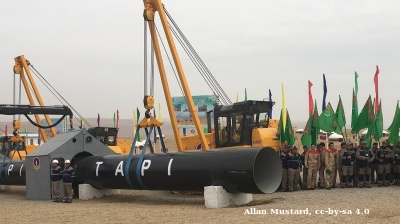Copper prices have been soaring as the post-coronavirus recovery gets under way, pushing up commodity prices, but copper has been supercharged by the digitisation of the global economy and the rise of the electric vehicle (EV) industry, leading some analysts to start talking about the beginnings of a super-cycle.
Copper prices hit a nine-year high on the London Metals Exchange (LME) this week, topping off a rally that began in March despite the global pandemic and oil price crash.
Copper prices rose from a low of $4,775 per tonne at the end of last March to end the year at $7,894 in December, and continued growing at the start of this year. They increased by another 4% from January 1 to top the $8,000 mark in the first week of January. Now they have jumped again and hit $9,305 per tonne as February 22, on their way to the metal’s all-time high price of $10,190 per tonne set in February 2011, a level that analysts at Goldman Sachs said at the start of February it would reach soon.
For comparison, as the coronacrisis fades investors are rotating out of their traditional safe haven of gold, where prices have already fallen 6% since the start of this year to $1,776 per ounce as of February 19. Copper prices were up 11% over the same seven-week period and have doubled since their low point in March last year.
The rise in copper prices has also caused problems for Kaz Minerals, a Kazakhstan-based major diversified metal company, where, as bne IntelliNews has been reporting, the major shareholders are trying to take the company private. The shareholders offered the minority shareholders GBP6.40 ($9.05) per share in November, but were more recently forced to increase that offer to GBP7.80 following the rise in copper prices. The problem is that Kaz Minerals has bought the rights to the Russia-based Baimskaya copper deposit and has not included the value of this world-class deposit in the valuation for the buy-out. Minority shareholders told bne IntelliNews that some GBP1bn-GBP2bn is missing from the valuation and believe a fair price for the shares would be closer to GBP10. With copper prices adding $1,000 to their price in just over a week, those estimates are probably even higher now.

Copper is the element of the future
Copper’s rise is part of the general rally in commodity prices that started to recover in the fourth quarter of last year, surprisingly quickly.
It appears that not only did equity investors anticipate a return to normal in 2021 that led to one of biggest rotations in market history, but so did industrial producers, who started putting in orders for metals while prices were cheap.
Many of the countries in Emerging Europe came out of 2020 in surprisingly good shape. Poland had the mildest recession in the world and both Russia and Ukraine experienced much smaller contractions than predicted thanks to their commodity export businesses.
In addition to the post-crisis re-inflation, copper prices have an additional tailwind from the huge changes underway to the nature of the global economy: everything that can is going online. And that means more computers. And that means more copper. A lot more copper.
Executives at the Udokan copper mine, a $3bn investment underway in Siberia to develop one of the biggest copper deposits in the world, told bne IntelliNews that currently there is sufficient copper production from the established mines to meet demand, but as computer use continues to grow exponentially, they anticipate a copper deficit emerging very soon and persisting until at least 2023, when the big new Rusian-based projects come online. Copper prices are expected to continue to rise in the meantime.
EVs are becoming mainstream and are anticipated to be another big consumer of copper. Catalysing the switch to EVs is the fact that traditional combustion engines are under pressure from ever tighter emissions rules – rules that have already caught VW out, after it was hit with hundreds of millions of euros in fines for lying about the emissions levels of its engines. The combination of the two has sent stocks in Elon Musk’s Telsa company into the stratosphere: the market capitalisation of Tesla is now bigger than that of VW, the biggest car manufacturer in the world.
Analysts at Goldman Sachs are arguing that in addition to the post-coronacrisis re-inflation, the world is just setting off on a new circa-eight year-long super-cycle that will see copper prices soar.
"We have no copper, copper inventories just drew their largest observable draw we've seen in the last five weeks, prices are already back to super-cycle levels and we have not even started the energy transition story of electrifying the world," Jeff Currie, head of commodity research at Goldman Sachs, told Bloomberg. "Copper is the only thing we know that can conduct electricity at the rate needed, so I'm really curious as to how high some of these markets can go," he added.
The Cu-kids on the block
The anticipated rise in copper prices has led to two new and very big copper investments in Russia.
Last year Kaz Minerals moved beyond its traditional stamping ground in Central Asia with the $900mn purchase of the undeveloped Baimskaya in Russia’s Far East that surprised shareholders, leading to a sell-off in the stock after the announcement of the purchase.
Currently nothing more than a frozen waste in Russia’s interior, the mine’s development is set to cost $7bn and will take seven years to go online. KAZ Minerals has referred to the mine as one of the world’s biggest undeveloped copper assets.
The Udokan copper deposit in Siberia is even more ambitious. Russian metals tycoon Alisher Usmanov, one of the richest men in the country and also the owner of diversified metallurgy company Metalloinvest, won an auction and paid $500mn for the Udokan licence twelve years ago.
As bne IntelliNews reported, ground has now been broken on the deposit, which is difficult to get to as it is in a remote part of Siberia and in awkward hilly geography where temperatures fall to the minus 50s in winter, making it one of the hardest deposits in the world to develop.
In the meanwhile, the infrastructure works at Udokan have dramatically progressed. Its operator, which has just rebranded and turned from being Baikal Mining Company to Udokan Copper, reported in late November that the integral readiness of the project of the construction of a mining and metallurgical plant in Udokan exceeds 40%.
In January 2021, it began construction of a railway base at BAM (Baikal-Amur Mainline) for the transportation of marketable products. According to Udokan Copper by mid-2022, it is planned to complete the construction and begin operation soon – starting commercial mining and processing at the level of 12mn tonnes of ore per year. The enterprise will produce 135-137,000 tonnes of pure copper – in copper cathodes (50%) and sulfide concentrate (50%). The company forecasts that its output will increase by at least 30%. The company will produce cathode copper and sulphide concentrate. The expected development period of the deposit is 50-60 years.
Soviet geologists discovered the deposit back in the late 1940s by accident. They were not looking for copper but for uranium, as the Cold War was just getting underway, but because of the technical difficulties it has remained untouched since then.
Udokan was a major find. Today, geologists estimate there are 26.7mn tonnes of copper ore under the JORC (Australian Joint Ore Reserves Committee, the industry standard) classification, making Udokan one of the three largest copper deposits on the planet.

The decision to build both these mines looks very prescient and the time both will come online also looks like it will tally sweetly with the accelerating growth in the EV market.
According to Rio Tinto's Factbook 2020, EVs require three to four times more copper than traditional vehicles. However, it is not only EVs themselves but also the necessary infrastructure that is copper intensive. An EV charging station contains up to 8kg of copper, which will accelerate the demand for copper as the business grows; major investments in charging stations still need to be made before EV use can become universal.
That rise in demand can already be seen on the market: between 2009 to 2019 demand for copper surged by 38%, the Financial Times reports, primarily driven by renewable energy sources and EVs. These sectors have gained importance since then, which is why it is safe to assume that the copper demand might grow even faster in the next decade, says the FT.
Taken all together, the outlook for the copper business look bright, with a rather attractive tint of ruddy red.
Features

Turkmenistan’s TAPI gas pipeline takes off
Turkmenistan's 1,800km TAPI gas pipeline breaks ground after 30 years with first 14km completed into Afghanistan, aiming to deliver 33bcm annually to Pakistan and India by 2027 despite geopolitical hurdles.

Looking back: Prabowo’s first year of populism, growth, and the pursuit of sovereignty
His administration, which began with a promise of pragmatic reform and continuity, has in recent months leaned heavily on populist and interventionist economic policies.

Emerging Europe’s growth holds up but risks loom, says wiiw
Fiscal fragility, weakening industrial demand from Germany, and the prolonged fallout from Russia’s war in Ukraine threaten to undermine growth momentum in parts of the region.

The man who sank Iran's Ayandeh Bank
Ali Ansari built an empire from steel pipes to Iran's largest shopping centre before his bank collapsed with $503mn in losses, operating what regulators described as a Ponzi scheme that poisoned Iran's banking sector.




